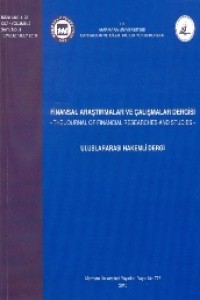Abstract
In 2004, Turkey managed to reduce the chronic high inflation rates that characterized its economy over the period 1975-2001 to single digits, thanks to economic policies implemented in the aftermath of the 2001 financial crisis. This paper analyzes inflation dynamics in the Turkish economy both in the short- and the long-run, over the period January 1990 to December 2011 by using the Johansen Cointegration Test and the Vector Error Correction model (VEC). Empirical results show that the inflation rates in Turkey are mainly related to changes in money supply, economic growth, nominal exchange rates, dollarization and real wages.
Abstract
Türkiye, 2001 yılındaki ekonomik kriz sonrası uygulamış olduğu ekonomik politikalar sonucunda
1975-2001 yılları arasında kronik bir sorun haline gelmiş olan enflasyon oranını 2004 yılında tek
haneli rakamlara düşürmeyi başarabilmiştir. Bu çalışmada, Ocak 1990 – Aralık 2011 dönemi
Türkiye ekonomisindeki enflasyon dinamikleri, uzun ve kısa dönemler için Johansen Cointegration
Test ve Vector Error Correction modeli (VEC) kullanılarak analiz edilmektedir. Analiz sonuçları
ilgili dönemde Türkiye’deki enflasyonun temel olarak para arzı, ekonomik büyüme, nominal döviz
kuru, dolarizasyon ve reel ücretlerdeki değişikliklerden kaynaklandığını ortaya koymaktadır.
Details
| Primary Language | Turkish |
|---|---|
| Journal Section | Makaleler |
| Authors | |
| Publication Date | January 10, 2014 |
| Submission Date | January 10, 2014 |
| Published in Issue | Year 2013 Volume: 5 Issue: 9 |


